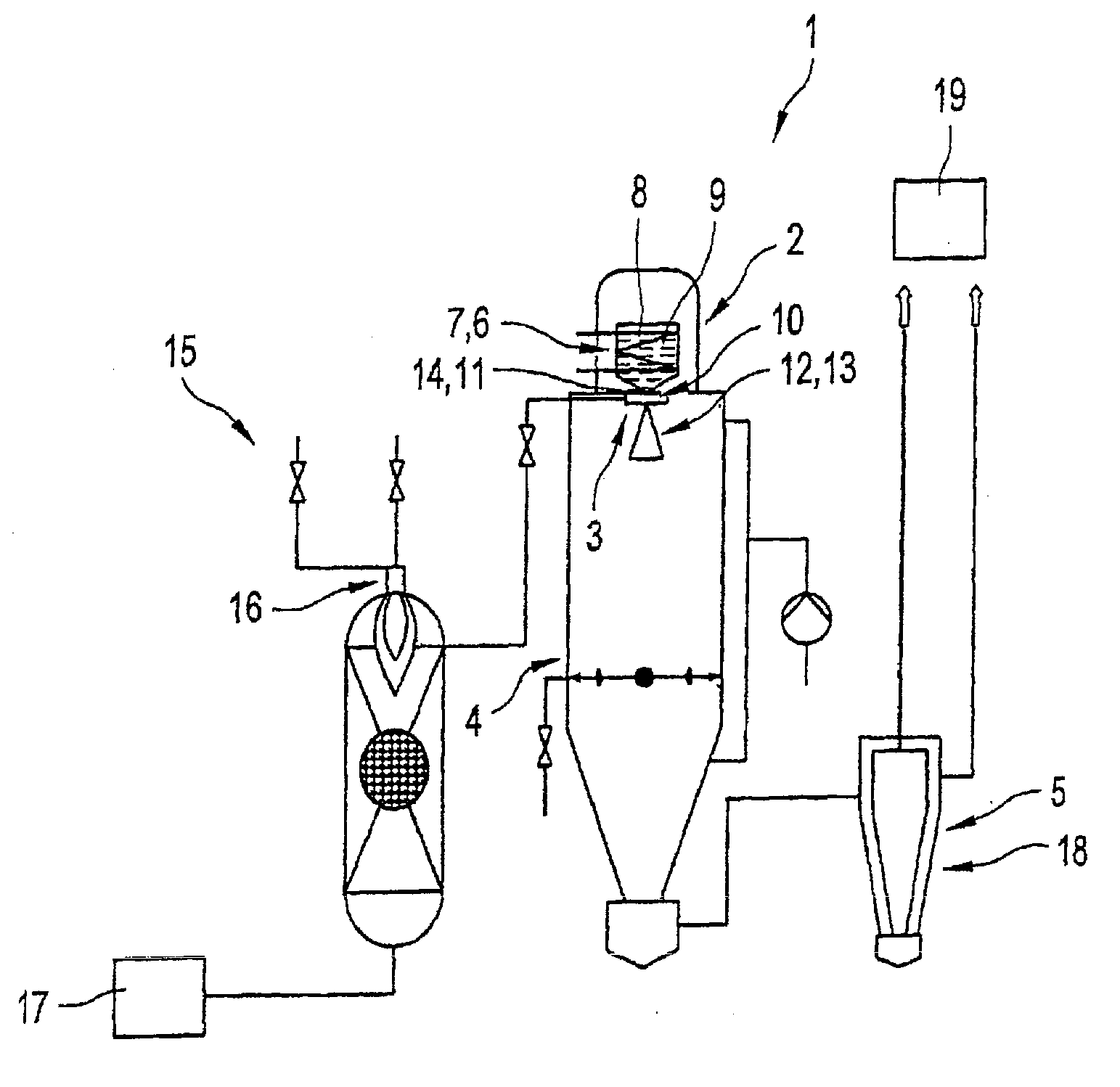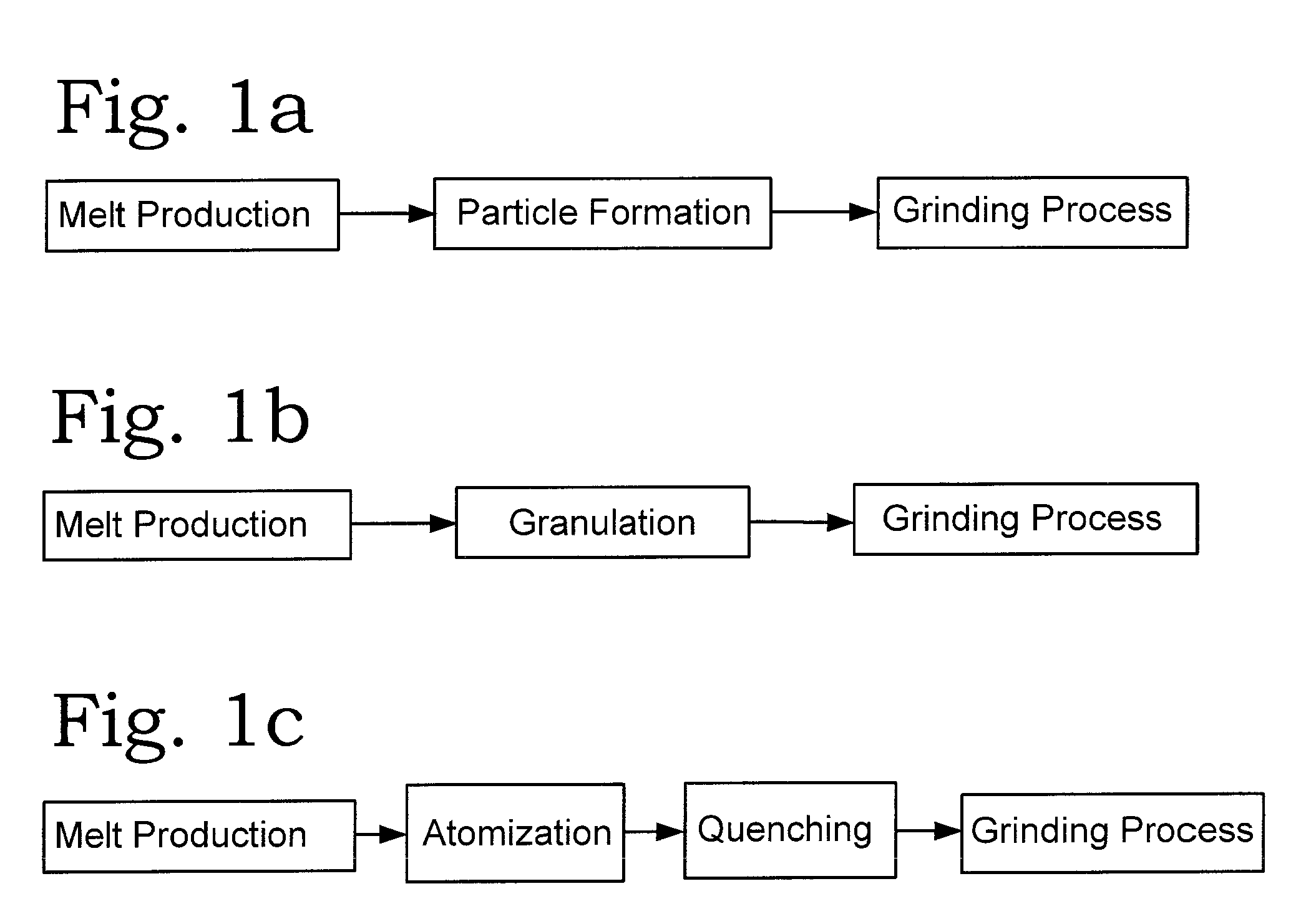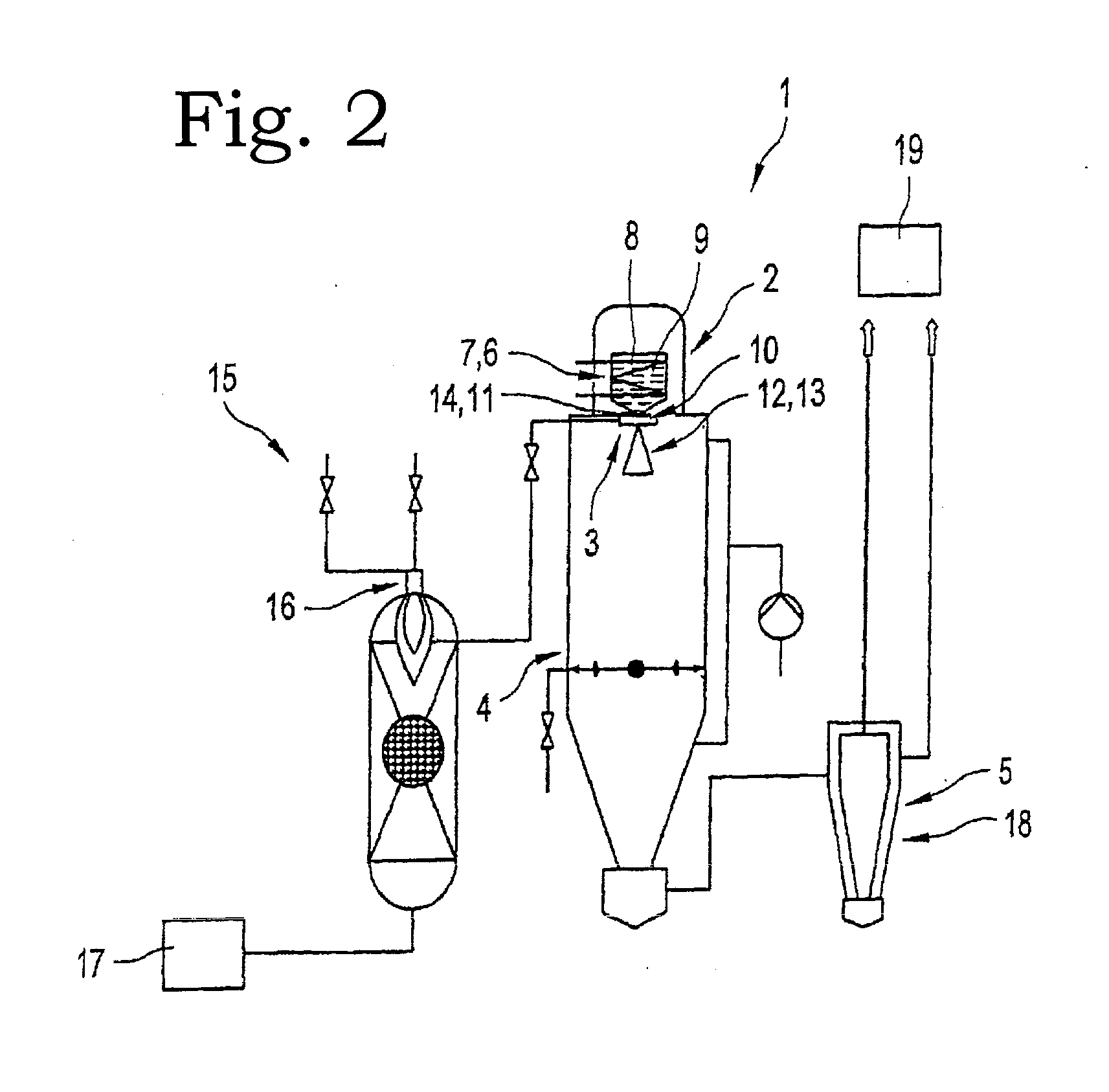Glass Powder, Especially Biologically Active Glass Powder, and Method for Producing Glass Powder, Especially Biologically Active Glass Powder
- Summary
- Abstract
- Description
- Claims
- Application Information
AI Technical Summary
Benefits of technology
Problems solved by technology
Method used
Image
Examples
Embodiment Construction
[0041] Referring now to the drawings, and more particularly to FIGS. 1a-1c, there is shown signal flow diagrams which illustrate in schematically simplified depiction the basic principle of the inventive method to produce non-spherical glass particles, especially from biologically active glass. The biologically active glasses include the so-called bioactive glasses which are characterized by the following glass composition ranges:
SiO240-70weight %P2O52-15weight %Na2O0-35weight %CaO5-35weight %MgO0-15weight %F0-10weight %
[0042] as well as antimicrobial glasses which are characterized by the following glass composition:
P2O50-80weight %SO30-40weight %B2O30-50weight %Al2O30-10weight %SiO20-10weight %Li2O0-25weight %Na2O0-20weight %K2O0-25weight %CaO0-25weight %MgO0-15weight %SrO0-15weight %BaO0-15weight %ZnO0-25weight %Ag2O0-5weight %CuO0-10weight %GeO20-10weight %TeO20-15weight %Cr2O30-10weight %J0-10weight %
whereby [0043] SiO2+P2O5+B2O3+Al2O3 is between 30-80 weight % and the sum...
PUM
| Property | Measurement | Unit |
|---|---|---|
| Temperature | aaaaa | aaaaa |
| Temperature | aaaaa | aaaaa |
| Temperature | aaaaa | aaaaa |
Abstract
Description
Claims
Application Information
 Login to View More
Login to View More - R&D
- Intellectual Property
- Life Sciences
- Materials
- Tech Scout
- Unparalleled Data Quality
- Higher Quality Content
- 60% Fewer Hallucinations
Browse by: Latest US Patents, China's latest patents, Technical Efficacy Thesaurus, Application Domain, Technology Topic, Popular Technical Reports.
© 2025 PatSnap. All rights reserved.Legal|Privacy policy|Modern Slavery Act Transparency Statement|Sitemap|About US| Contact US: help@patsnap.com



